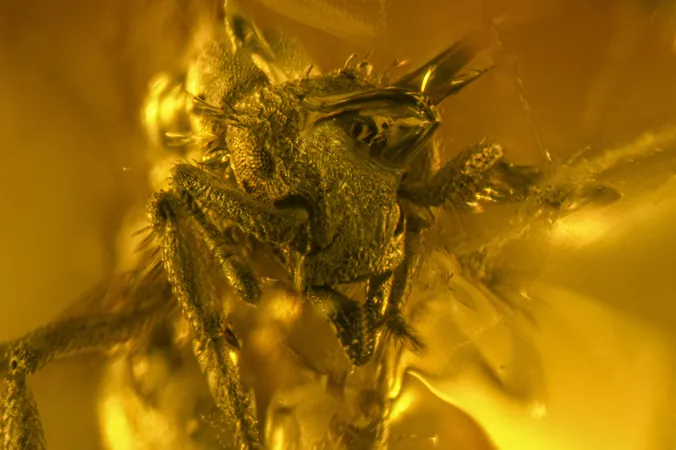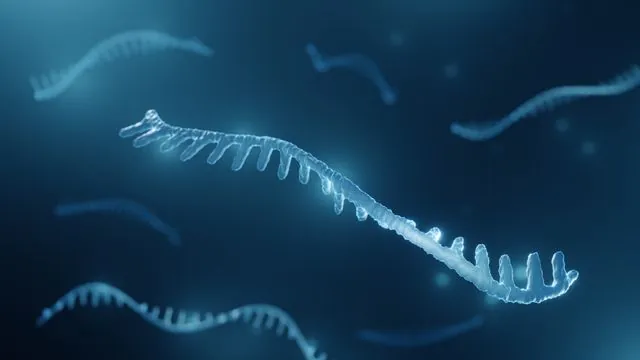
Ancient 'Dirt Ant' Fossil Unveils Secrets of Caribbean Evolution
2025-04-16
Author: Daniel
A Remarkable Discovery in Amber
Imagine uncovering a hidden treasure beneath layers of time—well, that’s precisely what scientists have done with the discovery of a 16-million-year-old fossil from the Caribbean! This remarkable find features a species of dirt ant, known scientifically as Basiceros enana, forever captured in Dominican amber.
Revolutionizing Our Understanding of Ant Evolution
For years, dirt ants, notorious for their incredible camouflage in soil, were thought to only inhabit the neotropical forests from Costa Rica to Southern Brazil. However, the fossil unearthed by a team from the New Jersey Institute of Technology not only challenges this notion but also offers profound insights into the evolutionary journey of these secretive insects.
A Tiny Wonder with a Big Story
The newly identified species, Basiceros enana, measures just 5.13 millimeters long—significantly smaller than its modern counterparts that can grow up to 9 millimeters. This tiny ant provides a direct link to an era long past, showcasing adaptations that were likely already in play 16 million years ago.
Unlocking the Mystery of Ant Distribution
Phil Barden, a senior author of the study, emphasizes the surprising nature of this discovery. The fossil indicates that these ants may have initially thrived in the Caribbean before disappearing during the Miocene epoch, suggesting that past environmental changes played a crucial role in their extinction.
State-of-the-Art Techniques Bring the Past to Light
Utilizing advanced imaging and 3D reconstruction techniques, researchers meticulously studied the fossil, revealing intricate details that were previously hidden. "Micro-CT scanning allowed us to uncover physical features of the ant that are critical to understanding its evolutionary significance," said researcher Gianpiero Fiorentino.
Evolutionary Insights from an Ancient Predator
The Basiceros enana doesn’t just share physical traits with modern dirt ants; it also possesses unique predatory features, including mandibles with 12 triangular teeth, hinting at behaviors that could have persisted for millions of years.
Lessons for Modern Biodiversity
The extinction of Basiceros ant species mirrors broader patterns seen today, with over a third of ant genera disappearing from the Dominican Republic since the amber's formation. This ancient story underscores the critical need to understand extinction patterns to protect current biodiversity in the face of human influence.
Why This Discovery Matters
Ultimately, this ancient ant fossil is more than just a relic; it’s a vital piece of the ecological puzzle. It not only reshapes our understanding of ant evolution but also compels us to consider the fragility of life and the importance of safeguarding our planet’s biodiversity against future threats.




 Brasil (PT)
Brasil (PT)
 Canada (EN)
Canada (EN)
 Chile (ES)
Chile (ES)
 Česko (CS)
Česko (CS)
 대한민국 (KO)
대한민국 (KO)
 España (ES)
España (ES)
 France (FR)
France (FR)
 Hong Kong (EN)
Hong Kong (EN)
 Italia (IT)
Italia (IT)
 日本 (JA)
日本 (JA)
 Magyarország (HU)
Magyarország (HU)
 Norge (NO)
Norge (NO)
 Polska (PL)
Polska (PL)
 Schweiz (DE)
Schweiz (DE)
 Singapore (EN)
Singapore (EN)
 Sverige (SV)
Sverige (SV)
 Suomi (FI)
Suomi (FI)
 Türkiye (TR)
Türkiye (TR)
 الإمارات العربية المتحدة (AR)
الإمارات العربية المتحدة (AR)